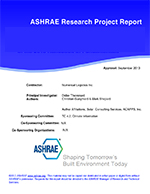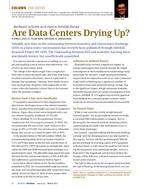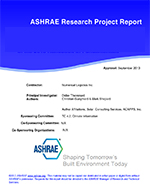In this paper, the thermal adaptive effect of the postural and positional adjustment of a seated human body was examined by simulating heat exchange on the surface of a manikin dressed as an office worker in summer and exposed to cooled spot airflow. This experimental method was adopted to measure local skin temperature and sensible heat transfer rate by positioning the manikin in forward-leaning or back-leaning postures. Furthermore, thermal characteristics of the body surface were simulated by changing the manikin’s orientation or position relative to the cooled spot airflow by means of coupled simulation of convection, radiation, moisture transport, and Fanger’s neutral model. Changing the manikin’s leaning posture had nonsignificant thermal adaptive effects. However, the simulation results indicate the possibility of improving local thermal comfort by changing the human body’s orientation or position relative to spot airflow.
Units: SI
Citation: ASHRAE Transactions, vol. 113, pt. 2
Product Details
- Published:
- 2007
- Number of Pages:
- 13
- File Size:
- 1 file , 8 MB
- Product Code(s):
- D-LB-07-033


